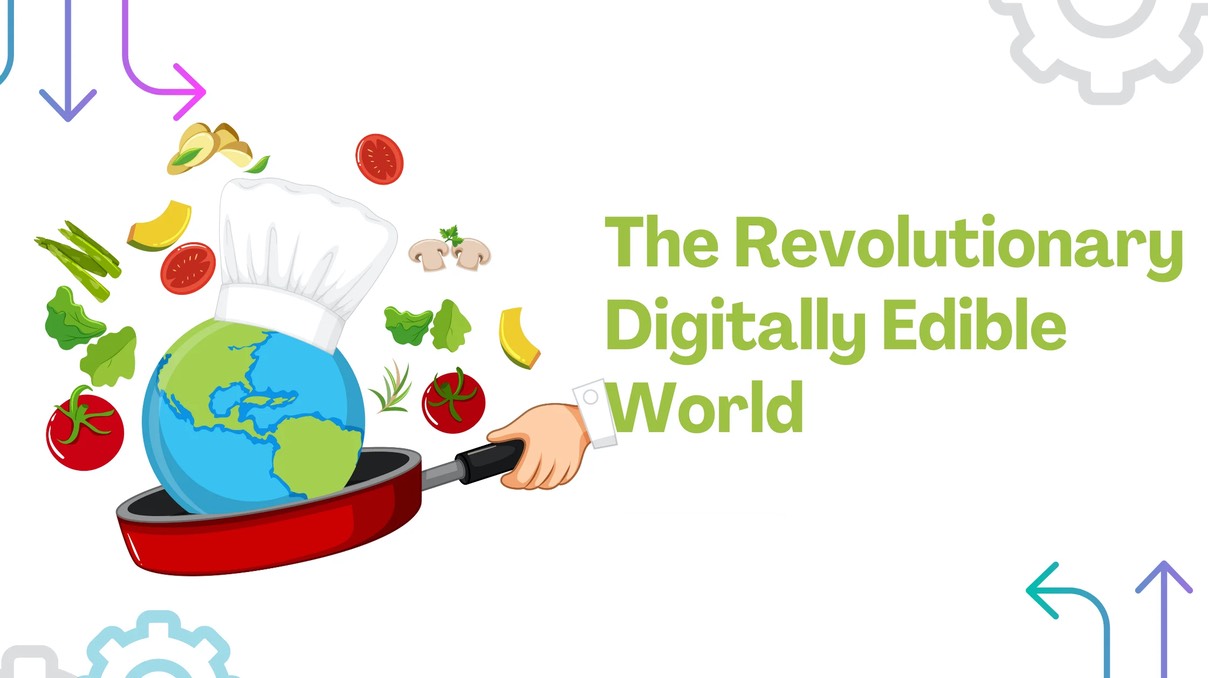
In today's rapidly advancing technological landscape, the integration of digital innovations into various aspects of our lives is becoming increasingly prevalent. One fascinating area where this convergence is taking place is in the realm of food and dining. Welcome to the era of a digitally edible world, where technology is revolutionizing the way we experience, interact with, and even consume our meals. In this article, we will delve into the current status, evolution, applicability, and future possibilities of this exciting concept.
A digitally edible world refers to a concept where digital technology is integrated into the food and beverage industry in innovative and interactive ways. It involves the use of digital elements to enhance and transform the way we experience and interact with food.
In a digitally edible world, various technologies are employed to create immersive and engaging dining experiences. This can include augmented reality (AR) and virtual reality (VR) applications that overlay digital information or virtual environments onto real-world dining settings. For example, using AR glasses or a smartphone app, diners could see digital images or animations appearing on their plates or hovering above the table, adding an interactive and visual element to their meals.
Another aspect of a digitally edible world is the use of edible electronics or food-based sensors. These technologies involve embedding electronic components or sensors into food items or packaging materials. They can provide real-time information about the food's freshness, and nutritional content, or even tailor the taste according to personal preferences. For instance, edible sensors could detect a person's dietary restrictions or allergies and adjust the composition of the food accordingly.
Additionally, digital platforms and applications can be used to enhance the entire food ecosystem, including aspects such as food sourcing, delivery, and sharing experiences. These platforms can connect consumers with local farmers, promote sustainable farming practices, and enable seamless online ordering and delivery services. Social media platforms could also play a role in sharing food experiences, recipes, and recommendations within a digitally connected community.
A digitally edible world envisions a future where technology and food converge to create new and exciting possibilities for dining experiences, personalized nutrition, and sustainable food systems. It aims to revolutionize the way we interact with food, making it more engaging, informative, and enjoyable.
The concept of a digitally edible world is gaining traction across the globe. We are witnessing the emergence of numerous technologies that aim to transform our dining experiences. Augmented reality (AR) and virtual reality (VR) applications are being developed to overlay digital content onto real-world dining settings, providing interactive and immersive experiences for consumers. From visual effects on plates to virtual dining environments, these technologies are already making their way into restaurants and culinary events, captivating diners with a fusion of the digital and gastronomic worlds.
The evolution of a digitally edible world has been driven by advancements in various fields. The miniaturization of electronics and the rise of wearable devices have opened up possibilities for embedding sensors and components directly into food items or packaging. Edible electronics and food-based sensors can provide real-time information about the food's quality, freshness, and nutritional content, enabling consumers to make informed choices. These technologies are still in their early stages but hold tremendous potential for shaping the future of food.
The applicability of a digitally edible world spans multiple domains within the food industry. Restaurants and culinary establishments can leverage augmented reality to enhance the dining experience, offering interactive menus, visual presentations of dishes, or even storytelling elements related to the food's origins and preparation. Online food delivery services can benefit from digital platforms that optimize logistics and enable real-time tracking, ensuring efficient and timely delivery. Additionally, personalized nutrition and dietary management can be facilitated through the use of sensors that monitor individuals' specific needs and tailor food composition accordingly.
Looking ahead, the future of a digitally edible world holds boundless potential. Imagine a scenario where personalized holographic chefs guide home cooks through recipes, or where 3D-printed food items with customized flavors and textures become commonplace. With advancements in artificial intelligence, machine learning, and data analytics, we can anticipate more sophisticated applications in food production, supply chain management, and sustainability efforts. Additionally, the power of social media and online platforms will further amplify the sharing of culinary experiences, enabling food enthusiasts to connect, collaborate, and learn from one another on a global scale.
A digitally edible world is gradually becoming a reality, blending the realms of technology and gastronomy in fascinating ways. With ongoing advancements and the increasing integration of digital innovations into the food industry, we are poised for a future where dining experiences are more engaging, interactive, and personalized than ever before. From augmented reality and edible sensors to personalized nutrition and digital platforms, the possibilities are vast. As we embark on this transformative journey, it is essential to balance technological advancements with sustainability, ethics, and the preservation of traditional culinary arts. Together, let us savor the flavors of a digitally edible world while embracing the rich tapestry of our food culture.